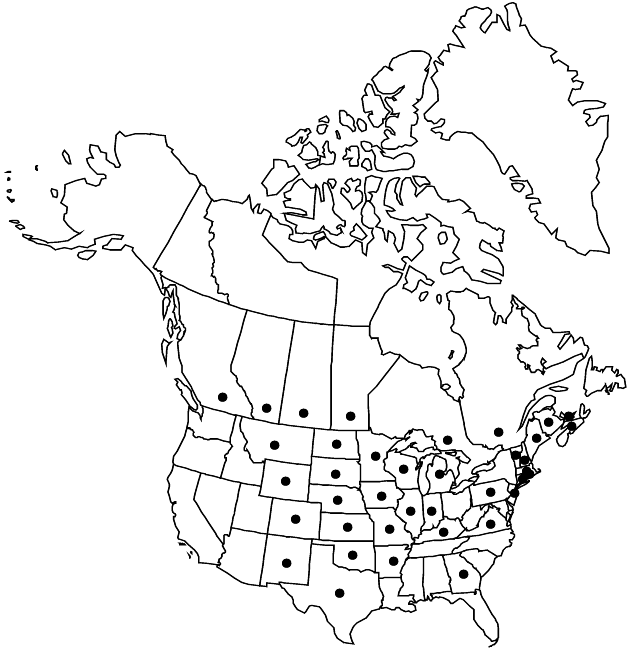Difference between revisions of "Helianthus pauciflorus"
Gen. N. Amer. Pl. 2: 177. 1818.
FNA>Volume Importer |
FNA>Volume Importer |
||
| Line 55: | Line 55: | ||
|publication year=1818 | |publication year=1818 | ||
|special status= | |special status= | ||
| − | |source xml=https://jpend@bitbucket.org/aafc-mbb/fna-data-curation.git/src/ | + | |source xml=https://jpend@bitbucket.org/aafc-mbb/fna-data-curation.git/src/f50eec43f223ca0e34566be0b046453a0960e173/coarse_grained_fna_xml/V19-20-21/V21_385.xml |
|tribe=Asteraceae tribe Heliantheae | |tribe=Asteraceae tribe Heliantheae | ||
|subtribe=Asteraceae (tribe Heliantheae) subtribe Helianthinae | |subtribe=Asteraceae (tribe Heliantheae) subtribe Helianthinae | ||
Revision as of 21:37, 16 December 2019
Perennials, 50–200 cm (rhizomatous). Stems erect, scabro-hispid. Leaves mostly basal; opposite, or opposite (proximal) and alternate; petioles 0–1 cm; blades lance-ovate to oblong-lanceolate, or rhombic-ovate to lance-linear, 5–27 × 2–6 cm, bases cuneate, margins serrate to subentire, abaxial faces sparsely hispid, sparsely, if at all, gland-dotted (cauline smaller). Heads 1–10. Peduncles 3–12 cm. Involucres hemispheric, 15–23 mm diam. Phyllaries 25–35, ovate, 6–10 × 3–5 mm, (margins ciliate) apices acute, abaxial faces glabrate to hispid. Paleae 9–10 mm, shallowly 3-toothed to subentire (apices ciliate, hairy). Ray florets 10–20; laminae 20–35 mm (abaxial faces usually gland-dotted). Disc florets 75+; corollas 6.5–7 mm, lobes usually reddish, sometimes yellow; anthers dark, appendages dark (style branches yellow). Cypselae 5–6 mm, glabrate; pappi of 2 aristate scales 4.5–5 mm plus 1–4 smaller aristate scales 0.3–2 mm. 2n = 102 (subspecies unknown).
Distribution

North America.
Discussion
Subspecies 2 (2 in the flora).
Variation within Helianthus pauciflorus is complex and is complicated by hybridization with H. tuberosus. Hybrids with H. tuberosus are known as H. ×laetiflorus, which is frequently cultivated.
Selected References
None.
Key
| 1 | Plants 80–200 cm; leaves usually alternate distally, blades oblong-lanceolate to lance-ovate, 8–27 cm, apices acuminate | Helianthus pauciflorus subsp. pauciflorus |
| 1 | Plants 50–120 cm; leaves opposite, blades rhombic-ovate to lance-linear, 5–12 cm, apices acute or obtuse | Helianthus pauciflorus subsp. subrhomboideus |